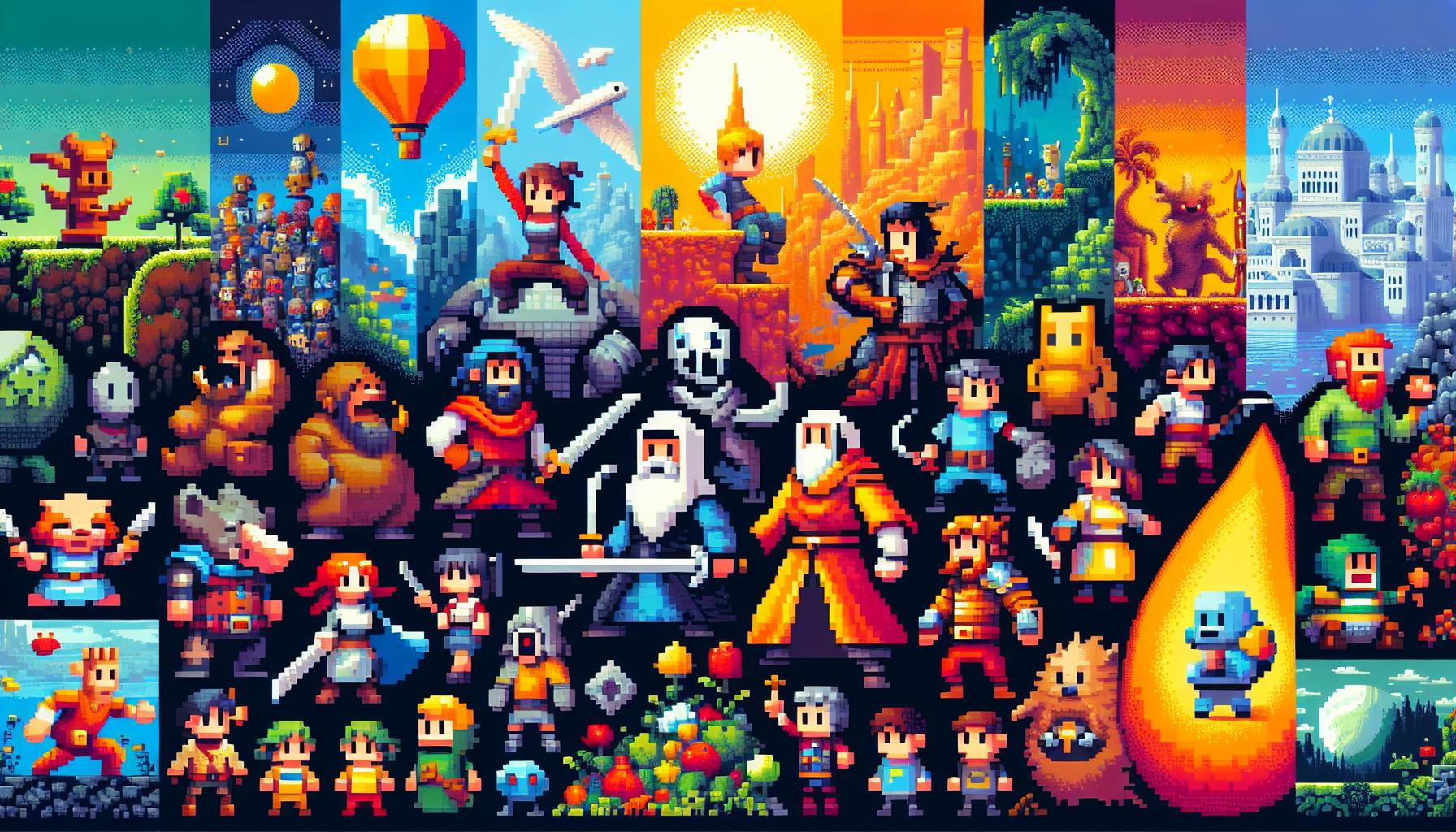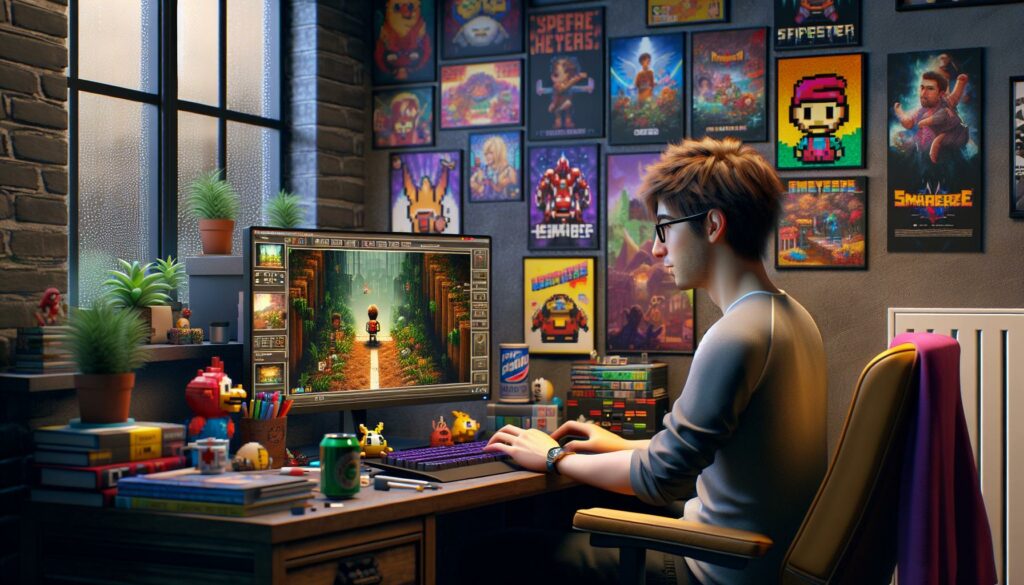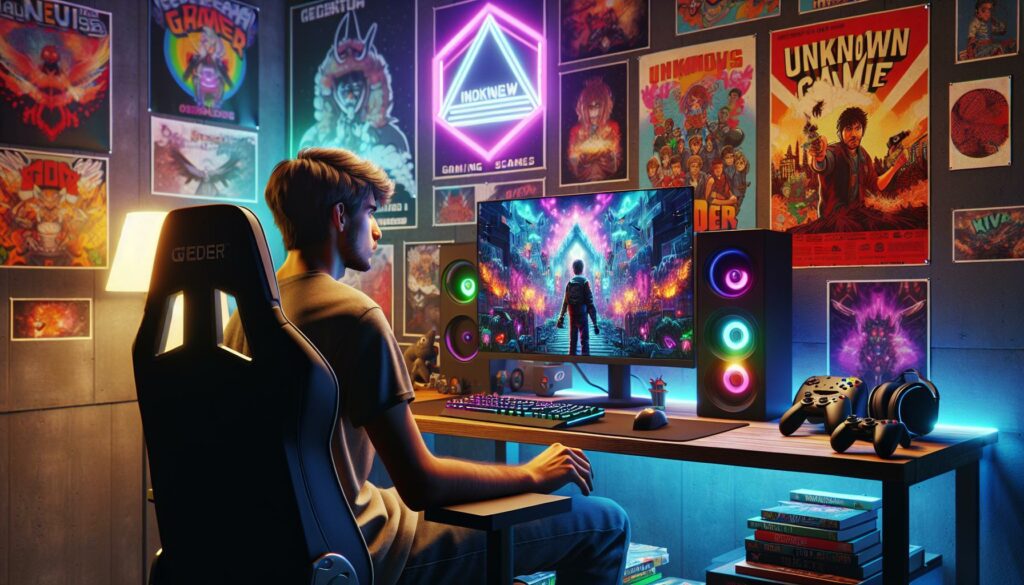As an avid gamer I’ve witnessed the incredible rise of indie games in recent years. These innovative titles crafted by small passionate teams have revolutionized the gaming landscape offering unique experiences that big-budget studios often can’t match.
I’m continuously amazed by the creativity and diversity in the online indie game scene. From pixel-art masterpieces to groundbreaking narrative adventures these games prove that stellar gameplay doesn’t require massive development budgets. The digital distribution platforms like Steam and itch.io have made it easier than ever for independent developers to share their creations with players worldwide.
Key Takeaways
- Indie games are created by small teams or solo developers without major publisher support, offering unique gameplay experiences at lower price points ($5-30)
- Popular platforms like Steam (50,000+ titles) and itch.io (500,000+ titles) have made it easier for indie developers to distribute their games globally
- Roguelikes, pixel art platformers, and narrative adventures are among the most successful indie game genres, with titles like Hades, Celeste, and Undertale achieving millions in sales
- Community engagement through Discord, forums, and early access programs plays a crucial role in indie game development, allowing developers to implement player feedback rapidly
- Digital marketplaces offer varying revenue share models, with itch.io providing up to 90/10 split favoring developers, while Steam maintains a standard 70/30 split
Online Indie Games
Online indie games represent independently developed digital experiences created by small teams or solo developers operating without major publisher support. These games showcase unique creative visions while leveraging online connectivity for distribution access.
Key Characteristics of Indie Games
Independent games demonstrate distinctive traits that set them apart from mainstream titles:
- Creative Freedom: Indie developers explore unconventional themes experimental mechanics like Journey’s wordless storytelling Undertale’s meta-narrative elements
- Small Development Teams: Studios typically range from 1-10 developers compared to 100+ at major publishers
- Lower Price Points: Most indie titles retail between $5-30 versus $60+ for AAA games
- Focused Scope: Games concentrate on perfecting specific mechanics rather than implementing multiple systems
- Direct Community Engagement: Developers maintain close communication with players through Discord forums social media
- Rapid Innovation: Short development cycles enable quick implementation of new ideas gameplay concepts
- Steam: Hosts 50,000+ indie titles provides developer tools community features
- Itch.io: Offers 500,000+ games focuses on experimental creative projects
- GOG: Specializes in DRM-free indie games classic titles
- Epic Games Store: Features curated indie selections weekly free games
- Console Marketplaces: Nintendo eShop PlayStation Store Xbox Live expand indie reach
| Platform | Active Indie Games | Average Price | Revenue Share |
|---|---|---|---|
| Steam | 50,000+ | $14.99 | 70/30 |
| Itch.io | 500,000+ | $7.99 | 90/10 |
| GOG | 4,000+ | $12.99 | 70/30 |
| Epic Store | 1,000+ | $19.99 | 88/12 |
Popular Online Indie Game Genres

Online indie games span diverse genres that showcase innovative mechanics and creative storytelling approaches. These genres reflect the experimental nature of independent development while maintaining strong player engagement.
Roguelikes and Roguelites
Roguelike games feature procedurally generated levels with permanent death mechanics. Notable examples include “Hades” (2.5 million copies sold) and “The Binding of Isaac” (7 million copies sold). Key characteristics include:
- Generate randomized dungeons with unique enemy patterns
- Create permanent character progression through multiple runs
- Unlock new items abilities through repeated gameplay
- Feature permadeath mechanics that reset progress
- Combine multiple gameplay elements (combat, exploration, resource management)
Pixel Art Platformers
Pixel art platformers dominate the indie scene with their distinctive retro-inspired visuals. Top-performing titles include “Celeste” (1 million copies) and “Hollow Knight” (3.5 million copies). Core elements include:
- Design precise jump mechanics for skill-based challenges
- Create handcrafted levels with increasing complexity
- Implement tight control schemes for fluid movement
- Include hidden collectibles secret areas
- Feature memorable character designs pixel animations
- Develop branching narratives with meaningful choices
- Create memorable characters with distinct personalities
- Design atmospheric environments that enhance storytelling
- Include multiple endings based on player decisions
- Incorporate unique narrative mechanics gameplay elements
Top Online Indie Games to Play Today

The indie game market features numerous standout titles that showcase exceptional creativity and gameplay innovation. Here’s a curated selection of must-play indie games divided into acclaimed hits and lesser-known treasures.
Critically Acclaimed Titles
These indie games have earned widespread recognition for their groundbreaking design and compelling experiences:
- Stardew Valley – A farming simulation RPG featuring multiplayer cooperation across 12 in-game seasons
- Among Us – A social deduction game supporting 4-15 players in space-themed survival scenarios
- Fall Guys – A battle royale platformer hosting 60 players in colorful obstacle course competitions
- Valheim – A Viking survival game offering 2-10 player cooperative exploration across procedural worlds
- Undertale – A unique RPG featuring dynamic combat systems with 93 possible ending combinations
| Game | Player Count | Average Playtime | Metacritic Score |
|---|---|---|---|
| Stardew Valley | 1-4 | 80+ hours | 89/100 |
| Among Us | 4-15 | 30+ hours | 85/100 |
| Fall Guys | 60 | 40+ hours | 80/100 |
| Valheim | 1-10 | 70+ hours | 88/100 |
| Undertale | 1 | 25+ hours | 92/100 |
- Loop Hero – An automated adventure game featuring 14 unique tile types for world building
- Vampire Survivors – A reverse bullet-hell game with 40+ unlockable characters
- Core Keeper – An underground survival crafting game supporting 8-player cooperative exploration
- Hypnospace Outlaw – A 90s internet simulator containing 56 unique webpages to investigate
- Gunfire Reborn – A roguelite FPS with 6 playable heroes each offering distinct abilities
| Game | Key Feature | Release Year | Average Price |
|---|---|---|---|
| Loop Hero | Deck building | 2021 | $14.99 |
| Vampire Survivors | Auto-combat | 2022 | $4.99 |
| Core Keeper | Base building | 2022 | $12.99 |
| Hypnospace Outlaw | Investigation | 2019 | $19.99 |
| Gunfire Reborn | Weapon variety | 2021 | $19.99 |
The Impact of Indie Games on Modern Gaming

Independent game development has transformed the gaming landscape through innovative mechanics, unique storytelling approaches, and direct community engagement. These changes have influenced how larger studios approach game development and player interaction.
Innovation and Creative Freedom
Independent developers pioneer experimental gameplay mechanics and unconventional narratives without corporate restrictions. Games like “Braid” introduced time manipulation mechanics that larger studios later adopted, while “Papers, Please” created the document-checking genre with its unique bureaucracy simulation. The success of “Minecraft” led to the survival crafting boom, inspiring numerous AAA titles like “Fallout 76” and “Valheim.” Here’s a comparison of indie game innovations adopted by major studios:
| Indie Innovation | Game Example | AAA Adoption |
|---|---|---|
| Time Manipulation | Braid (2008) | Quantum Break (2016) |
| Survival Crafting | Minecraft (2011) | Fallout 76 (2018) |
| Rouge-lite Elements | The Binding of Isaac (2011) | Hades (2020) |
| Card-based Combat | Slay the Spire (2019) | Marvel’s Midnight Suns (2022) |
Community-Driven Development
Indie developers maintain direct communication channels with players through Discord servers, Steam forums, and social media platforms. This approach enables:
- Rapid implementation of player feedback through frequent updates
- Early access programs that shape game development based on community input
- Direct bug reporting systems that expedite issue resolution
- Modding support that extends game longevity
- Community events that influence content updates
Games like “Deep Rock Galactic” demonstrate successful community integration with 4 million player suggestions implemented through their feedback system. “Terraria” has released 45 major updates based on community input since its launch. “Factorio” maintains a 98% positive rating on Steam through consistent community engagement and weekly development updates.
Finding and Supporting Indie Game Developers
Independent game creators rely on digital marketplaces to share their work with a global audience. These platforms serve as hubs for discovering new indie games connecting players directly with developers.
- Steam Direct enables indie developers to publish games for a $100 fee with a 30% revenue share model
- Itch.io offers flexible revenue sharing starting at 10% with optional higher percentages to support the platform
- Game Jolt provides free game hosting specifically tailored to indie developers with a 30% platform fee
- IndieDB combines a game database with developer blogs hosting 45,000+ indie titles
- Indie Game Stand focuses on curated indie selections with rotating featured games
Key marketplace features:
| Platform | Active Games | Avg. Price | Revenue Share |
|---|---|---|---|
| Steam | 50,000+ | $14.99 | 70/30 |
| Itch.io | 500,000+ | $4.99 | 90/10 |
| Game Jolt | 100,000+ | Free-$9.99 | 70/30 |
| IndieDB | 45,000+ | Varied | N/A |
- Purchase games at full price during launch periods
- Leave detailed reviews on marketplace platforms
- Join developer Discord communities
- Back Kickstarter or Patreon campaigns
- Share game recommendations on social media
Amazing Games
I firmly believe that online indie games represent the beating heart of gaming innovation. Through their unique vision and direct community engagement these passionate developers continue to push boundaries and challenge our expectations of what games can be.
From the revolutionary success of titles like “Stardew Valley” to hidden gems waiting to be discovered indie games offer experiences that simply can’t be found anywhere else. The thriving indie scene has forever changed how we play create and think about games.
By supporting these creative developers we’re not just getting amazing games – we’re investing in the future of gaming itself. I’ve seen firsthand how indie innovation drives the entire industry forward and I can’t wait to see what these passionate creators come up with next.



